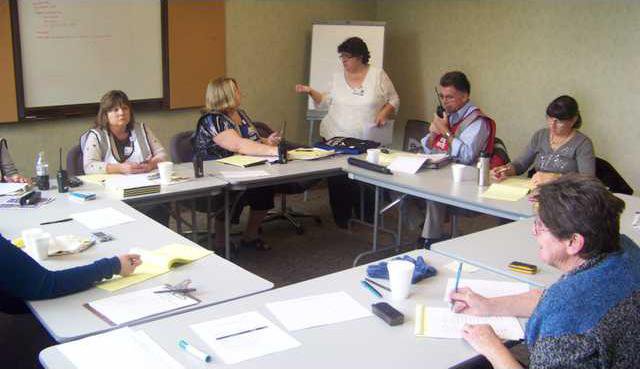Serious flooding and dam failure has occurred in Oakdale. The power is lost, back-up generators have failed, telephones are out, and traffic jams are occurring citywide due to inaccessible streets and weather conditions.
These are the simulated circumstances the staff at Oak Valley Hospital and the Oak Valley Care Center had to deal with on May 18 during this year’s Golden Guardian Exercise, a full-scale training drill through the Stanislaus Office of Emergency Services and California Emergency Management Agency.
A simulated National Weather System alert for the drill early on Tuesday, May 17 indicated only that serious flooding caused by heavy rains and some dams failing could create some type of flooding in the area. By the late afternoon of May 17, the command center at the hospital was advised that the floods were severe and that all power in Oakdale was lost creating traffic jams and other power failure problems.
The Oak Valley disaster team began creating plans to have family members pick up residents of the Oak Valley Care Center who were mobile and discharging patients who were ambulatory. By May 18, they had discharged 80 patients to family members or local nursing facilities with space but were still left with10 patients needing placement.
Things didn’t get any better in the scenario for the staff at the main hospital.
At 7 a.m. May 18, the command center was advised that their back-up generators were now disabled and there was no power, running water, telephones, and computers and that the need to evacuate all patients was imminent.
Only three portable back-up generators were available and those were dedicated to patients in the intensive care unit for life sustaining medical equipment. Until the portable generators were all running, some nurses had to do ventilations of patients manually.
Hospital patients were triaged according to actual medical conditions of the real patients occupying the facility at the time with the most serious to be moved first. The patients ranged in age from 7 to 94 years. Hospitals available for receiving patients had to determine their capability to accept specific types of patients and conditions.
Because of flooding and traffic conditions, medical helicopters were summoned for the transports. The bad weather conditions of the scenario made both ambulance and helicopter transportation options difficult and unpredictable. For the purpose of the drill, actual ambulances served as “helicopters.”
In the command center located on the first floor of the hospital administrative building, designated staff assumed their pre-planned roles though National Incident Management System (NIMS) compliance programs and the Incident Command Structure (ICS), a systematic tool used for the command, control, and coordination of emergency responses.
“In 15 minutes three helicopters are going to be landing near the north side of the parking lot,” announced Chief Nursing Officer Susan Spoelma, acting in the role of incident commander.
“What about power lines and water splashing?” asked one of the other members.
Spoelma used a hand-held radio, her only method of communication other than human “runners” for the exercise, to alert the incoming pilots.
“Overall things are going well,” said Spoelma when she got a chance to step away from the command center. “Evacuation and coordination with the county is our biggest challenge right now.”
Spoelma praised the hospital’s NIMS/ICS system and its training, stating, “We believe in training people as deep as we can.”
Cheryl Koff, Administrator of the Oak Valley Care Center recognized the importance of the support she received from services at the state and federal level that assisted her task of safe transfers for the care center patients.
“What you learn from these drills is the importance of communicating more effectively and the value of support services,” Koff said.
During the drill the hospital was prepared to halt the exercise if a real emergency occurred. Plans were in place to ensure actual hospital operations took precedence over the simulated exercise.
Members of the Oak Valley administration team as well as evaluators from the Stanislaus Office of Emergency Services assessed the drill. Evaluators gave positive remarks to the Oak Valley Hospital disaster team for a successful drill.
At the completion of the drill, hospital staff felt positive about their ability to constantly adjust to the changing priorities and working with external agencies to complete their tasks.





